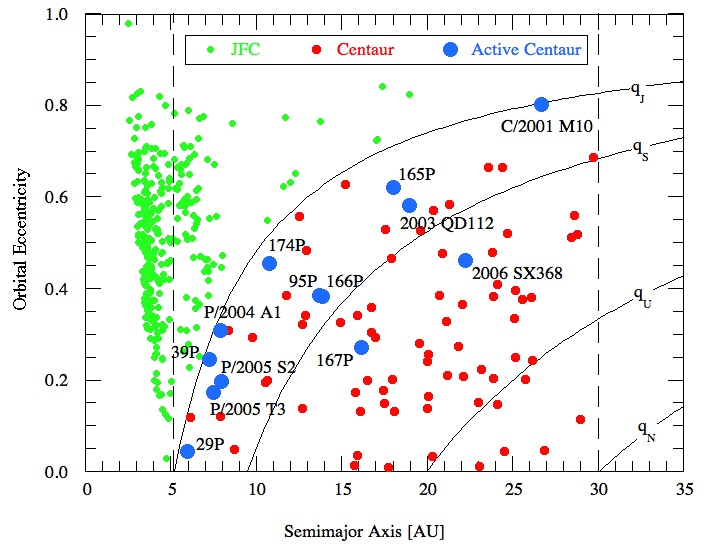

"Centaurs are bodies having orbital perihelia and semimajor axes between the orbits of Jupiter (at 5.2 AU) and Neptune (at 30 AU) and which are not in 1:1 mean-motion resonance with any planet" pdf reference.
This definition culls objects which are crossing the orbits of giant planets and therefore interacting strongly with them, while excluding stable bodies protected from such interactions (the giant planet Trojans).

At the end of 2009, almost 100 Centaurs were known by the 5 < q,a < 30 AU definition.
The lifetimes of Centaurs are much shorter than the age of the Solar system, with characteristic values of order 10Myr. This means that the Centaurs must be supplied from a long-lived source - we believe that this is the Kuiper belt itself, although the details are unclear.
The fate of Centaurs is mainly (about 2/3) to be ejected from the Solar system by scattering from giant planets. The remaining 1/3 are scattered inwards. Some strike the planets or the Sun. The rest are captured into small orbits by Jupiter, and begin to sublimate in the heat of the Sun. Such objects are known by other labels including "comets", or more specifically "Jupiter family comets" (although they are just trapped Centaurs, which are themselves escaped Kuiper belt objects).